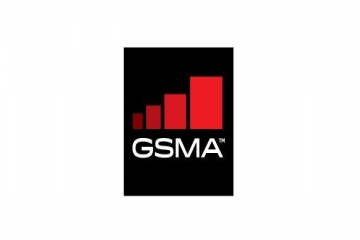Setting the Standard for Global Smart City Deployments
There are very few use cases for the Internet of Things (IoT) that capture the imaginations of vendors, service providers and users like smart cities. The ability to bring together multiple applications within a relatively confined area to drive new levels of connectedness and convenience always generates excitement. Today, 54% of the world’s population lives in urban areas, a proportion that is expected to increase to 66% by 2050. Smart cities will therefore be a major driving force in improving everything from waste management to the management and regulation of roads and transport infrastructure.
Global traction for smart cities is generating pace, with more and more examples of new technology deployments becoming known every day. Here are just a few innovative examples that showcase the variety of emerging use cases and applications within emerging smart cities:
Smart Santander
Santander, the coastal city in northern Spain, is home to roughly 180,000 people. Like many of Spain’s major towns, it has been looking for new ways to stimulate new opportunities, drive economic growth and reduce costs. It was looking to achieve all this without impacting the frequency or quality of public services. Naturally available public funding was scarce, so the city has chosen to partner with several other public and private organizations to build a smart city platform, called SmartSantander. The intention was to transform the city into a living laboratory for smart city technology.
The project has deployed more than 3,000 IoT devices, 200 GPRS modules, and more than 2,000 QR/RFID tags on both fixed and mobile locations throughout the city. This real-world testbed enables a broad range of services including environmental monitoring, parking management, traffic monitoring and management, irrigation management and improved incident reporting. Santander is large enough to provide some very real use cases in terms of scale and breadth of service, but compact enough to allow the system to be fully deployed inexpensively and quickly. The platform offers real variability in terms of hardware and application design, network architecture, static and mobile device deployments, integration with legacy information systems, and a citizen interface. The residents of Santander can therefore put real-world stress on the system and prove its capability.
Smart transport in the UK
Smart transport solutions are desperately needed to reduce CO2 emissions, ease congestion and deliver a better all-round transport experience to citizens. Nowhere is this truer than in the UK, which has some of the world’s most congested roads. Thankfully several local UK councils have recognized the value that integrated smart transport initiatives can have in transforming the travel experience across the country.
UK councils in Buckinghamshire, Hertfordshire, Northamptonshire and Oxfordshire – the broad exurban area surrounding London – are currently field testing an intelligent transport service (ITS). It was recently announced that this same service will be extended to Birmingham, the UK’s second largest city. As suburban areas near major cities, these four councils all share a number of similar transportation challenges. These include widespread traffic congestion and conflicting regional and local public transportation schedules among others.
These councils have therefore started to use an IoT platform to collect and process transportation data. This information is generated by a series of IoT devices that help streamline traffic flow, control traffic signaling and organize public transportation scheduling and control systems. The overall goal is to make it easier for people to get in and out of the nearby cities as easily as possible – something which can be applied to other municipalities around the world.

Congratulating Columbus
It isn’t just European cities and governments that are innovating in the smart city space. The US government recently awarded a $40 million grant to the city of Columbus and named it the winner of USDOT’s Smart City Challenge. This challenge, set out by the US Department of Transportation, looked to determine what it means to be a smart city. In total, seven US cities were short-listed as potential winners with each of them assessed against their ability to fully integrate innovative technologies. These include self-driving cars, connected vehicles, and the use of transportation network smart sensors. Columbus will now use its grant money to see through its smart city vision.
Sustaining innovation through open standards
If these levels of innovation are to continue, smart city initiatives need to be looked at in more detail to ensure they are being developed and implemented in the most efficient and effective way possible. This means maintaining a clear commitment to open standards for all IoT service development and curtailing the negative impacts of fragmentation. A recent report from Machina Research, and commissioned by InterDigital, shows that smart cities could squander $341 billion by 2025 if they adopt a fragmented versus standardized approach to IoT solution deployment.
Open standards will allow IoT and smart city deployments to remain relevant and scalable as technology evolves. Smart cities must achieve scale if attractive ROI figures are to be realized – this will be especially critical if governments are the implementers using public funds. It’s critical that these purchasers are not locked into a proprietary standard, or one single vendor, especially this early in the IoT lifecycle. Open standards will enable more cities to do things right the first time and avoid taking a gamble on a less expensive but potentially uncertain proprietary solutions.
Telecoms.com




